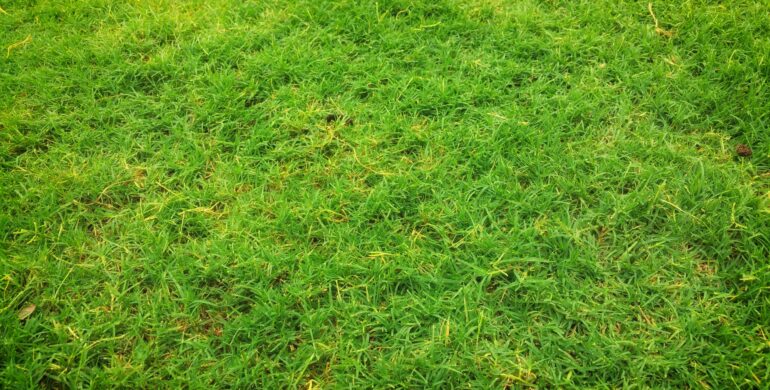
During summer, your lawn can quickly sizzle, making the lush green turfgrass into crispy brown shades. You may also have noticed that they become patchy and straw-like during the cold winter months.
Many lawn owners believe that brown turf means dead. Fortunately, your turfgrass may only be in the state of dormancy. So, can you salvage a dying lawn? In general, yes. It depends on particular conditions, such as what is causing the browning in the first place.
Drought is the main reason for dying grass. If your lawn is totally dead because of it, you may need to start to find a certified turfgrass grower near you.
What Are Dormant Grasses?
Grasses naturally “shut down” and turn brown to conserve water and nutrients during the cold season. In summer, drought and extreme heat stress out grasses, so they go dormant. Turf can safely remain dormant for three to four weeks without dying, though severe drought will kill them over time.
Though brown turf is not pleasant to look at, it will green up once conditions improve. In addition to weather, note that there are other reasons for lawn browning: excessive nitrogen, insects, cultural practices, lawn diseases, pet spots, fungus, and poor soil conditions. If you reside in an area with acidic soil and a cooler climate, consider a TifBlair Centipede Grass – a centipede variety with minimal fertility requirements.
How to Revive Dying Lawn
It doesn’t need a lawn expert to rescue a dying lawn. Taking some simple actions can do the job as follows:
1. Apply Fungicide
While most lawns recover without chemicals, you may need to combat brown patches with fungicides. You can start noticing improvements in as early as 24 hours, depending on the fungicide.
2. Eliminate Excessive Thatch
Thatching is when some decomposing plant materials create a layer of buildup across your soil’s surface, including roots, stolons, and rhizomes. A Thatch thicker than a half-inch can negatively affect the movement of nutrients, air, and water. In addition, excessive thatch prevents roots from developing correctly, causing disease and insect issues.
Get rid of any excess thatch using a power rake or vertical mower. Comb through the grass in a back and forth motion with enough pressure to reach the bottom layer of thatch and penetrate the soil slightly.
3. Water Your Lawn Properly
Make sure to water your lawn correctly since excessive moisture can lead to brown patches. The ideal times are 10 a.m. or between 4 p.m. and 6 p.m., so the grass dries out fully before nightfall. If you let your grass remain wet all night, it may become more vulnerable to pests and disease.
For instance, a beautiful variety called Zeon Zoysiagrass requires 1″ of water once a week. In dry or hot weather, increase it to 2 1/2″ per week to keep your lawn healthy.
4. Aerate Your Lawn
Since timing is the key, aerate your lawn in late spring and early autumn using a solid and long-handled fork. Lawns can become compacted through various weather conditions that restrict the absorption of water, air, and nutrients at the root level.
Dig the fork down into the lawn and create small holes. Leave at least a set of holes every two feet or until the entire lawn is aerated. This will stimulate new growth, improve water drainage, and de-compact your lawn below surface level.
5. Mowing Can Grow Your Grass Thicker
When the cold winter is almost over, and your grass seedlings are established and dry, start mowing at least once in two weeks in spring. In summer, mow your lawn once a week to encourage full and thick regrowth.
6. Stay off Your Lawn During Drought
Avoid foot traffic and lawn equipment on your lawn, especially during drought. The weight of these activities can compact the soil, which makes it more difficult for the lawn to absorb moisture.
7. Leave Grass Clippings on the Lawn
Grass clippings can provide much-needed moisture. After mowing, leave these clippings but don’t let them get too thick or clump together in mats because they may suffocate the lawn.